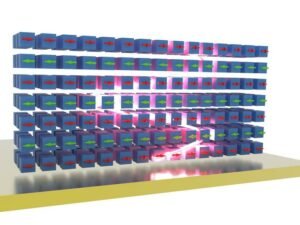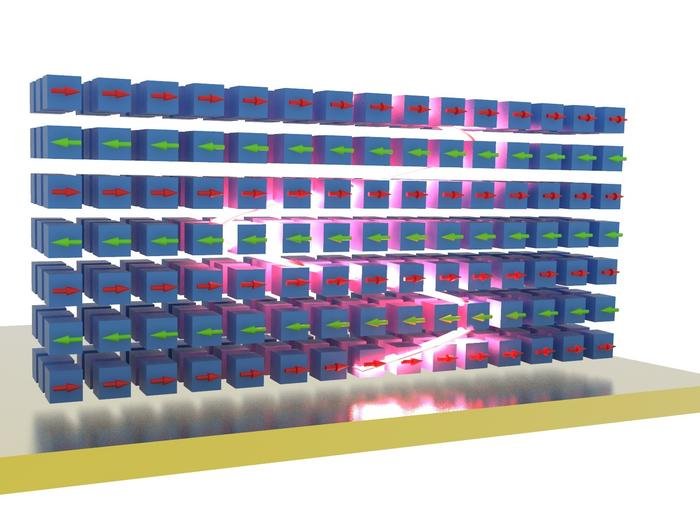A team of researchers has shown the ability to successfully trap light using an array of powerful magnets made of a specialized semiconductor.
Using metamaterials to trap light may open up a whole host of futuristic applications, including magnetic lasers, magneto-optical memory devices, and maybe even some quantum transduction applications like ultra-fast quantum computers or ultra-fast AI.
Using the Power of Bound Excitons Inside Magnets to Trap Light
Light moves at light speed, which is essentially 186,000 miles per second. Gravity can affect the path of light, but very little is known to dramatically interfere with the speed of light. This duality has made light both super-efficient in some technological applications and extremely difficult to manage in others. As a result, dreams of magneto-lasers or photonic computers have languished as fun theories with little tangible progress.
Now, a team of researchers from the City College of New York (CCNY) has shown the ability to stop light in its tracks, a feat that may open up all kinds of interesting engineering applications.
Van Der Waals Materials Prove to be the Key Ingredient to Trap Light
In their published research, which appeared in the journal Nature, CCNY physics Professor Vinod Menon and colleagues used a type of semiconductor layered with chromium, bromine, and sulfur, resulting in something physicists call a van der Waals material. Named after Dutch physicist Johannes Diderik van der Waals, these metamaterials are of special interest to researchers due to their magnetic and optical properties, among other attributes.
In this case, the researchers observed that their selected van der Waals material hosts strongly bound excitons, which are a type of bound quasiparticle. Excitons are known for their particularly strong optical interactions, meaning that if assembled in the correct pattern, their magnetic properties may make them the right type of material to not only affect the flow of the light but actually trap light in its tracks. And that is exactly what they did.


Image created by Rezlind Bushati.
The researchers also note that the unique strength of the metamaterial’s magnetic fields was a major part of the success and something that could be tested and observed in a very simple way.
“Since the light bounces back and forth inside the magnet, interactions are genuinely enhanced,” said Dr. Florian Dirnberger, Menon’s co-lead author of the study. “To give an example, when we apply an external magnetic field, the near-infrared reflection of light is altered so much, (that) the material basically changes its color.”
“That’s a pretty strong magneto-optic response,” Dirnberger adds.
Trapping Light Opens Up a Number of Exciting Possibilities
The ability of their magnetic metamaterial to successfully trap light was a welcome result, but the lead researcher says it wasn’t necessarily the likeliest outcome.
“Ordinarily, light does not respond so strongly to magnetism,” said Menon. “This is why technological applications based on magneto-optic effects often require the implementation of sensitive optical detection schemes.”
As a result, the team says, their breakthrough could be a significant tool to “motivate novel directions for the manipulation of quantum material properties by strong light–matter coupling,” resulting in previously impossible applications. This could include ultra-fast quantum computers and even a rebirth of a once-promising memory storage technique that has essentially been abandoned.
“Technological applications of magnetic materials today are mostly related to magneto-electric phenomena,” said co-author Jiamin Quan. “Given such strong interactions between magnetism and light, we can now hope to one day create magnetic lasers and may reconsider old concepts of optically controlled magnetic memory.”
Christopher Plain is a Science Fiction and Fantasy novelist and Head Science Writer at The Debrief. Follow and connect with him on X, learn about his books at plainfiction.com, or email him directly at christopher@thedebrief.org.

